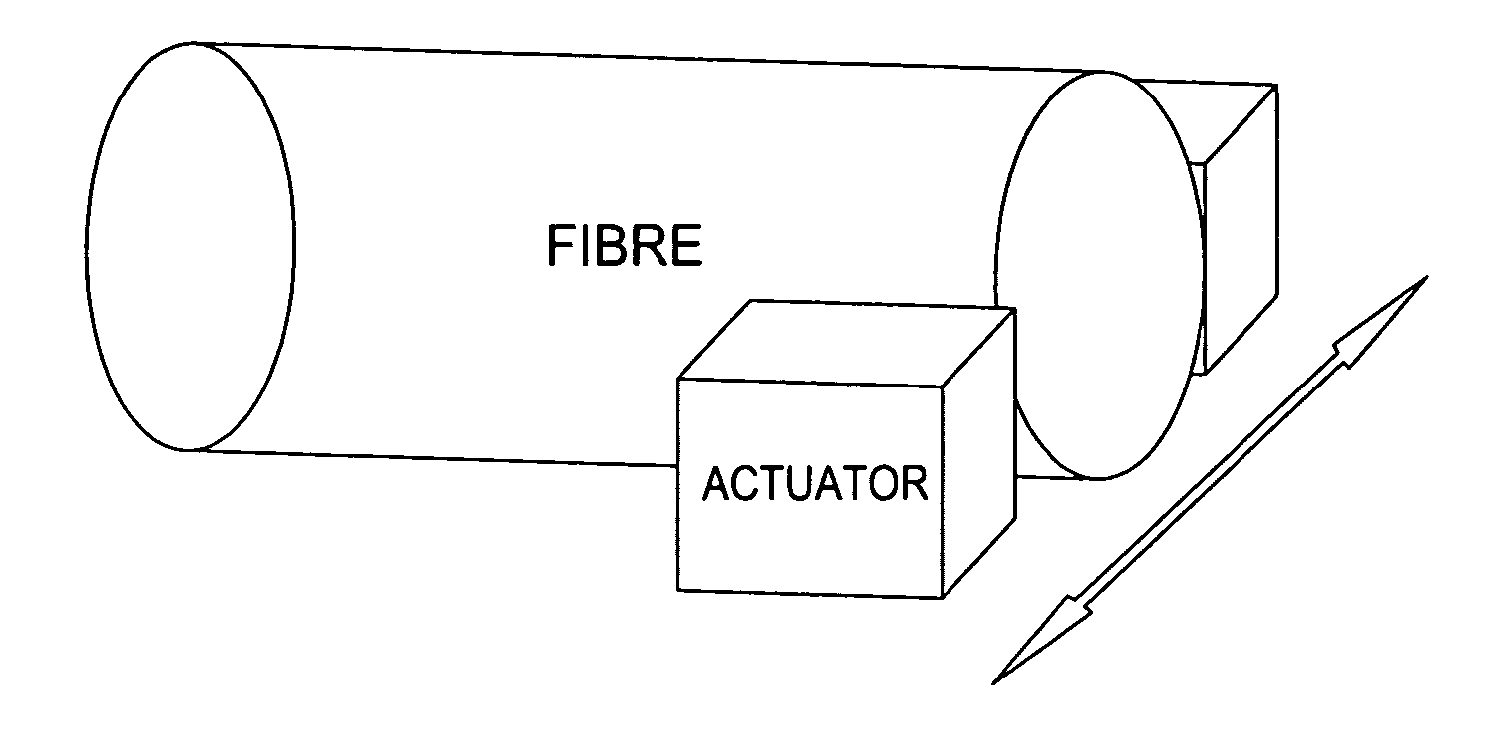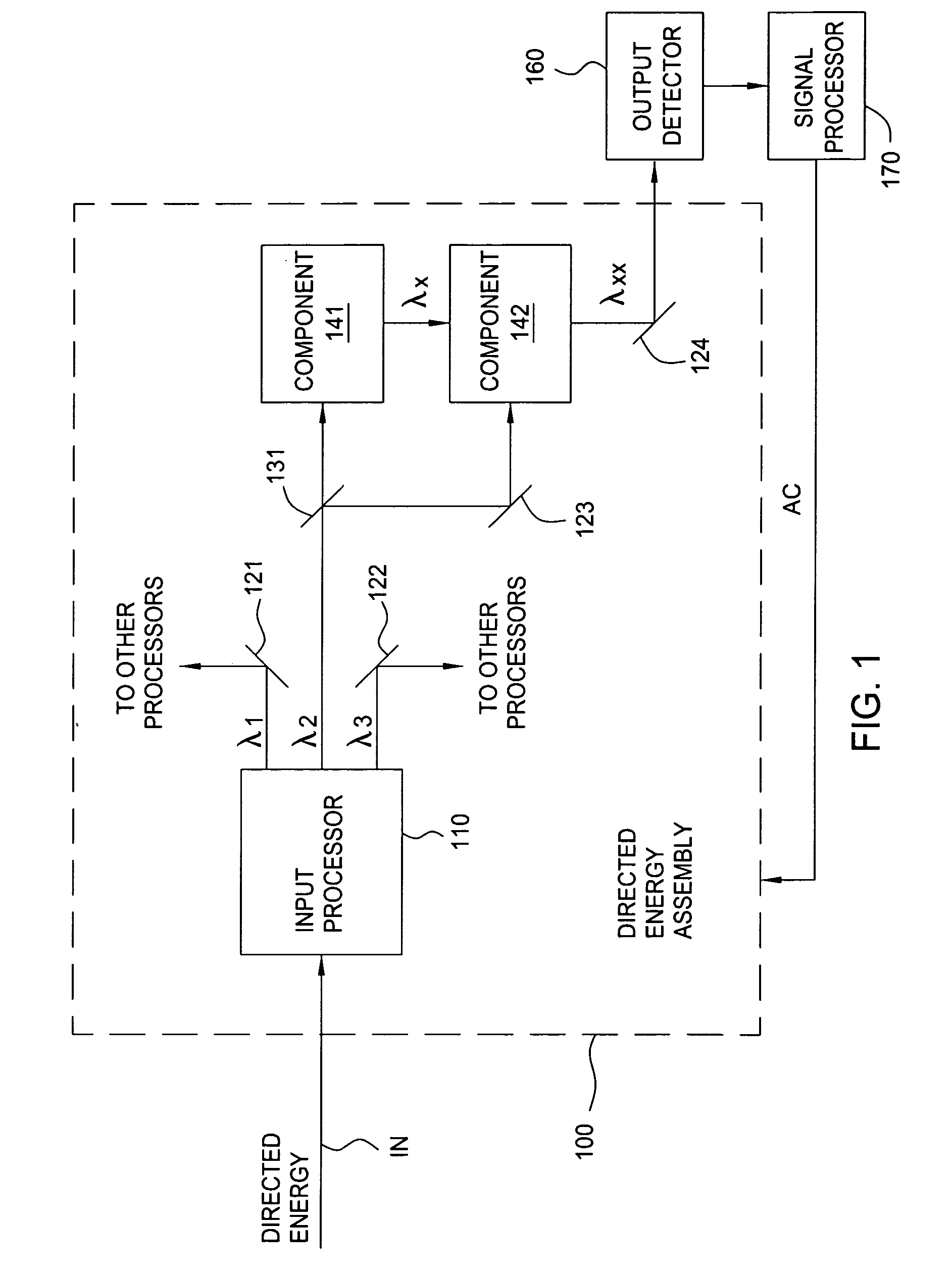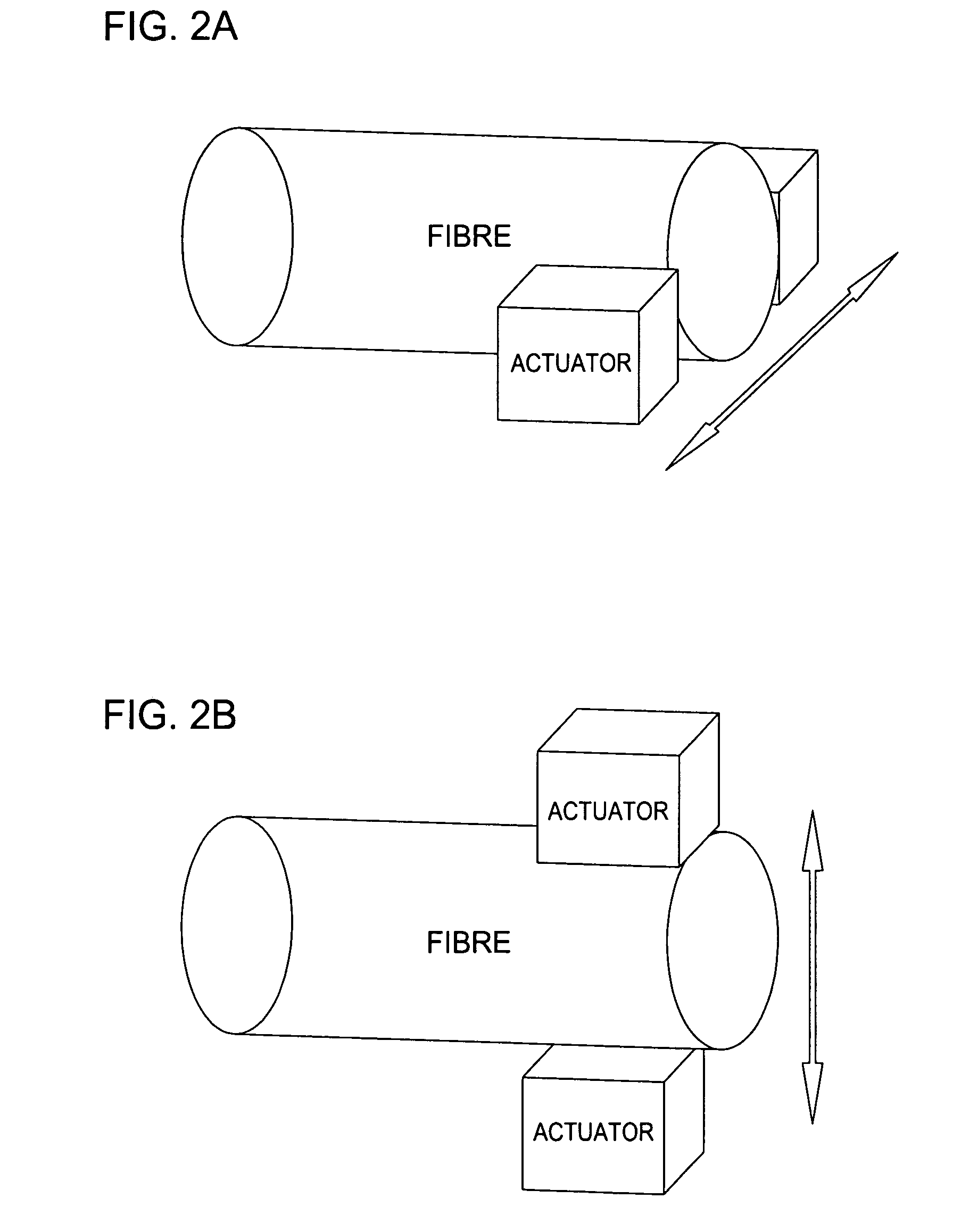Method, apparatus and system for self-aligning components, sub-assemblies and assemblies
a technology of self-aligning components and sub-assemblies, applied in the direction of optics, instruments, optical light guides, etc., can solve the problems of disproportionately large percentage of the cost associated with the production of optical communication packages, slow and costly approach, and large obstacle to the production of low-cost telecommunication equipment. achieve the effect of optimizing the energy coupling efficiency
- Summary
- Abstract
- Description
- Claims
- Application Information
AI Technical Summary
Benefits of technology
Problems solved by technology
Method used
Image
Examples
first embodiment
[0029]FIGS. 2-4 depict schematic representations of adjustable component sub-mounts of the invention. Each of these figures depicts a component sub-mount in which a component such as an optical component is physically urged in a particular direction using one or more actuators included within the sub-mount. Thus, a simplified alignment of an optical component within an assembly is realized by controlling one or more actuators included within a-sub mount with the optical component.
[0030]FIG. 2 depicts an adjustable component sub-mount comprising a fiber positioner. Specifically, an optical fiber is physically mounted between two actuators in either a horizontal arrangement (x-axis) per FIG. 2A or vertical arrangement (y-axis) per FIG. 2B. In the arrangement of FIG. 2A, the actuators are used to adapt the position of the optical fiber along the x-axis. Similarly, in the arrangement of FIG. 2B, the actuators are used to adapt the position of the optical fiber along the y-axis. In a fu...
second embodiment
[0033]FIG. 5 depicts a schematic representation of an adjustable component sub mount according to one of the invention. As shown in FIG. 5, the adjustable component sub-mount comprises a laser source sub mount, such as for a laser diode. Specifically, a laser source and adjustable prism are operably positioned via a platform such that light provided by the source passes through the prism.
[0034] The adjustable prism comprises two transparent prism walls (e.g., glass, plastic and the like) denoted as PW1 and PW2 having disposed there between a transparent low modulus material denoted as TLMM and at least one actuator A. In the embodiment of FIG. 5, two actuators denoted as A1 and A2 are shown as being positioned between the transparent prism walls at an upper portion (A1) and a lower portion (A2). All that is necessary is that one or more actuators are operable to perturb the normally coplanar transparent prism walls such that the path of light produced by the source may be controlled...
PUM
 Login to View More
Login to View More Abstract
Description
Claims
Application Information
 Login to View More
Login to View More - R&D
- Intellectual Property
- Life Sciences
- Materials
- Tech Scout
- Unparalleled Data Quality
- Higher Quality Content
- 60% Fewer Hallucinations
Browse by: Latest US Patents, China's latest patents, Technical Efficacy Thesaurus, Application Domain, Technology Topic, Popular Technical Reports.
© 2025 PatSnap. All rights reserved.Legal|Privacy policy|Modern Slavery Act Transparency Statement|Sitemap|About US| Contact US: help@patsnap.com



